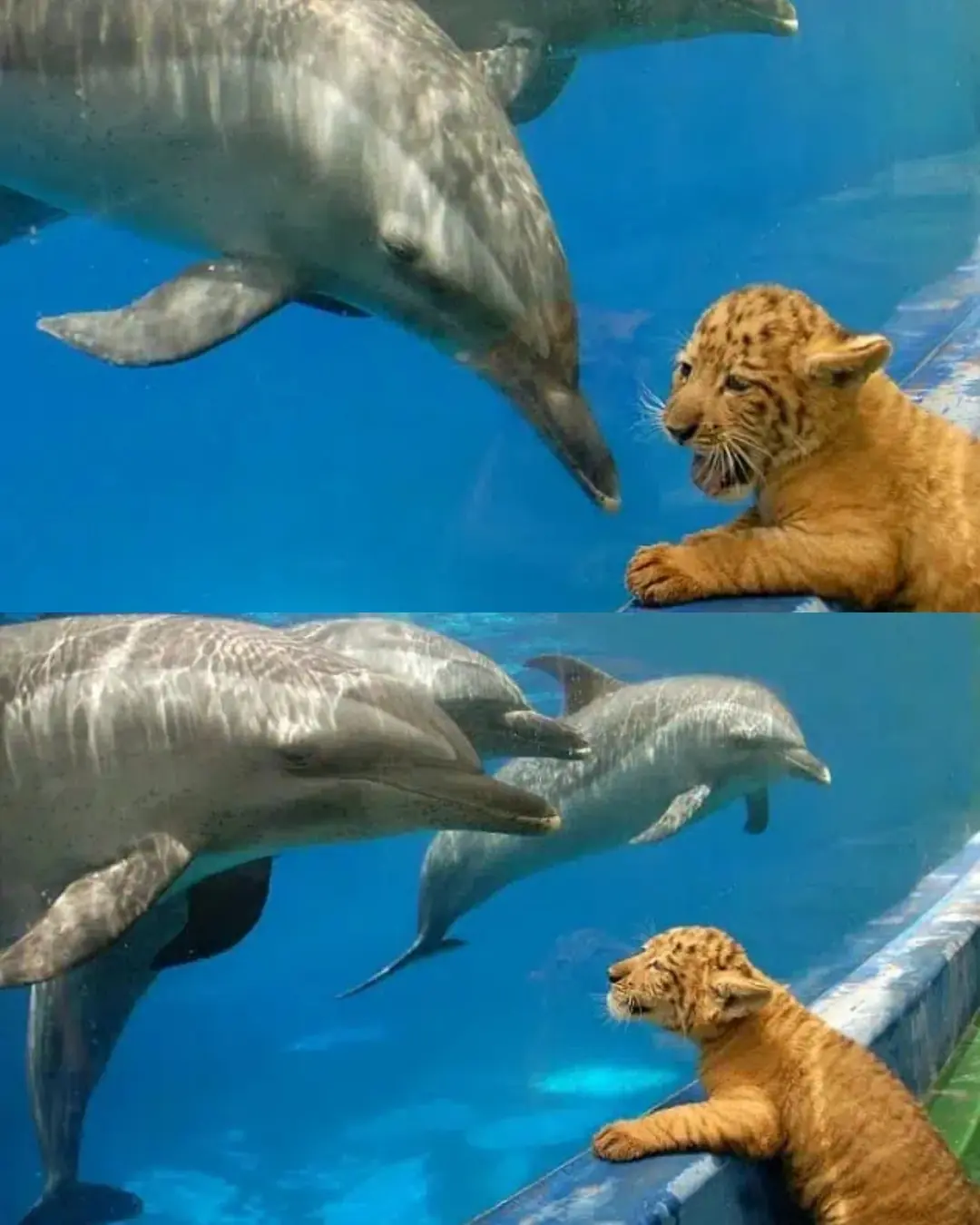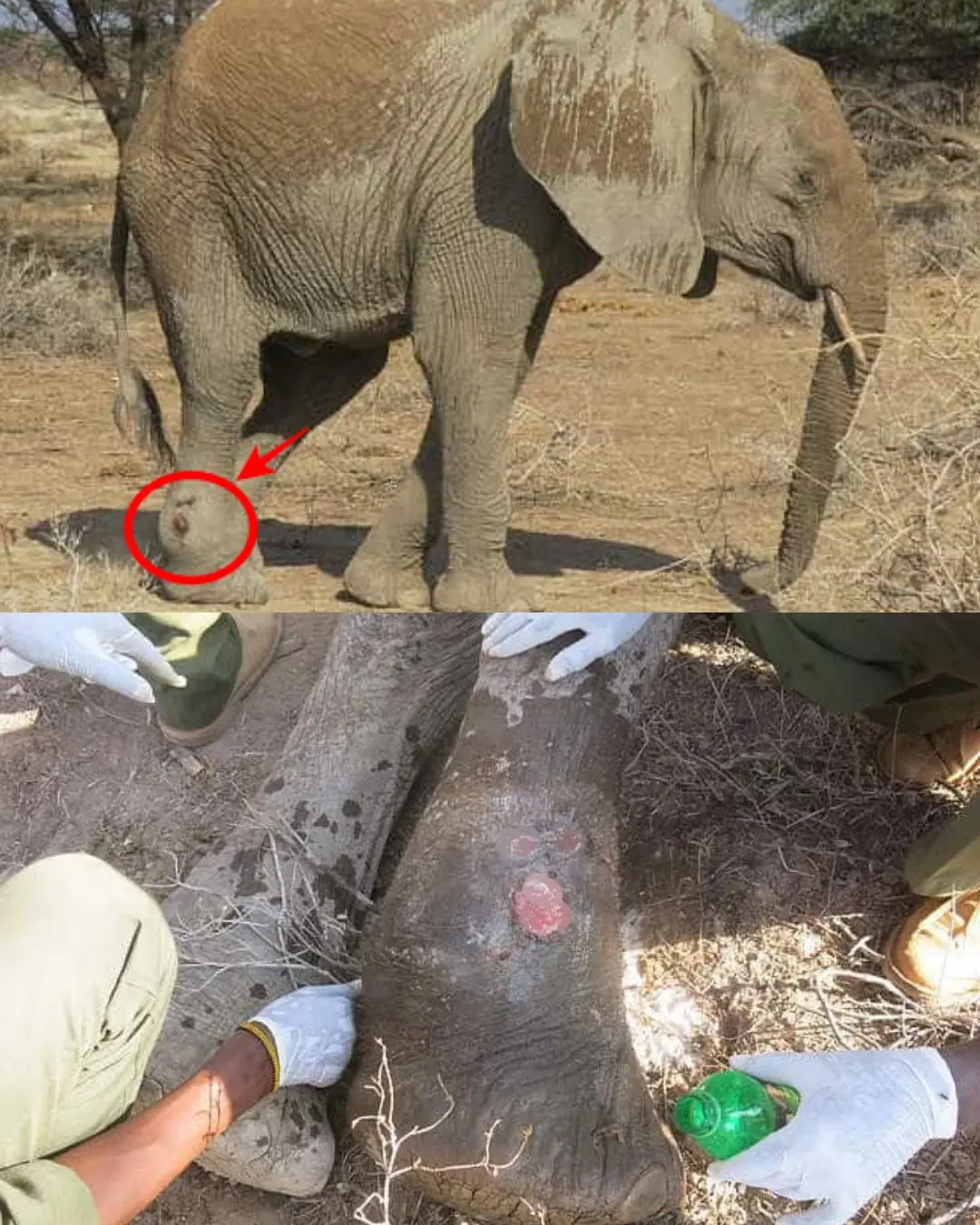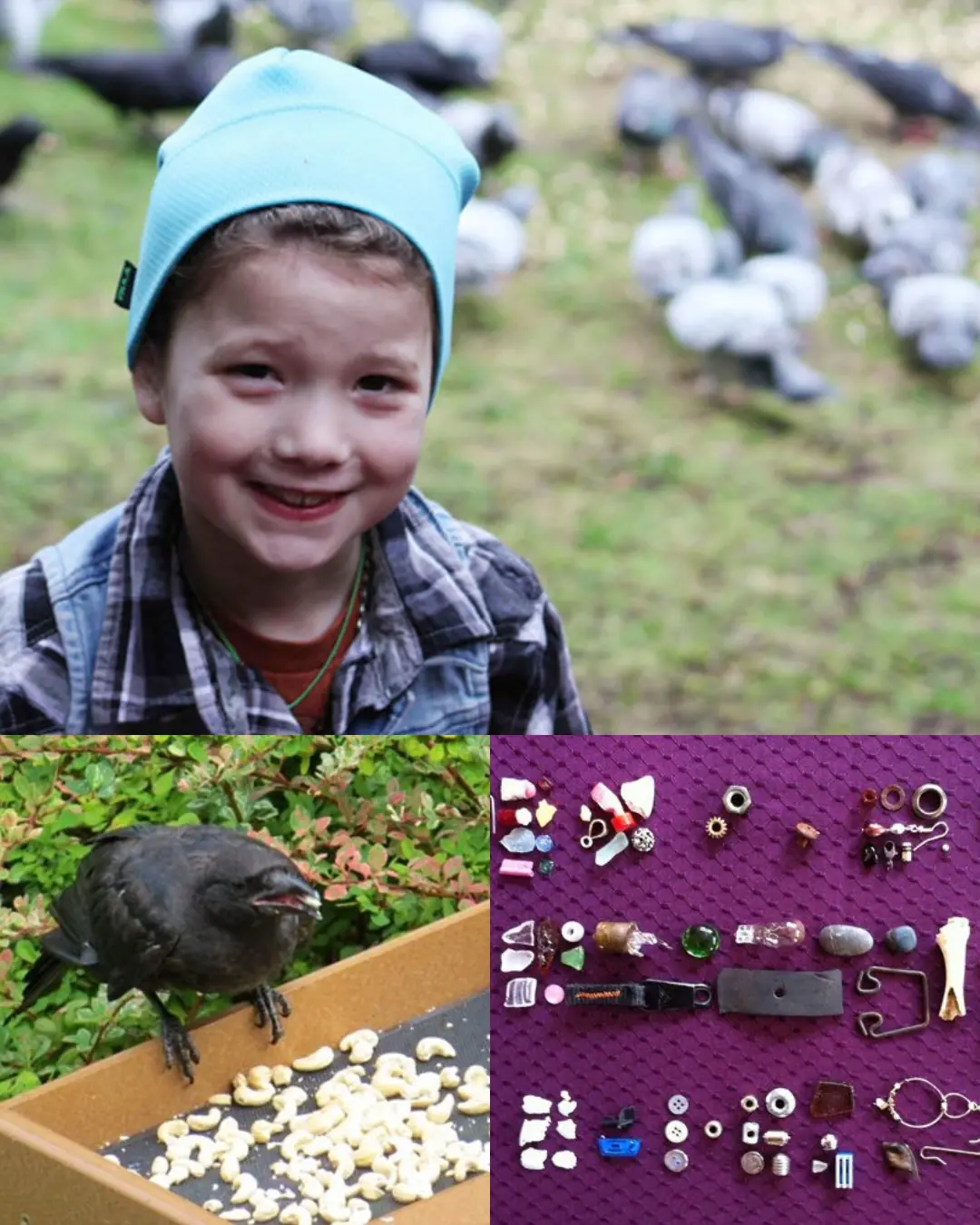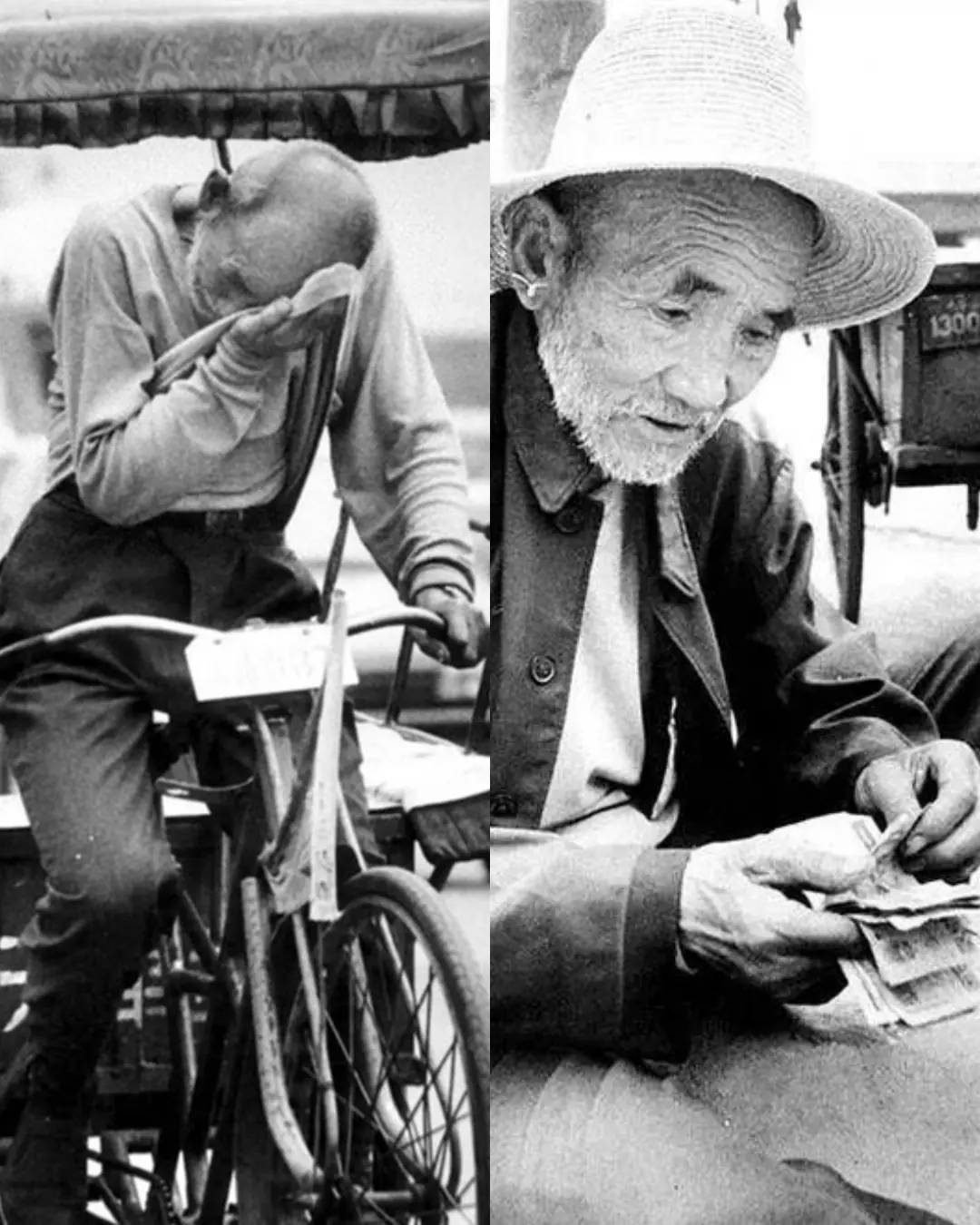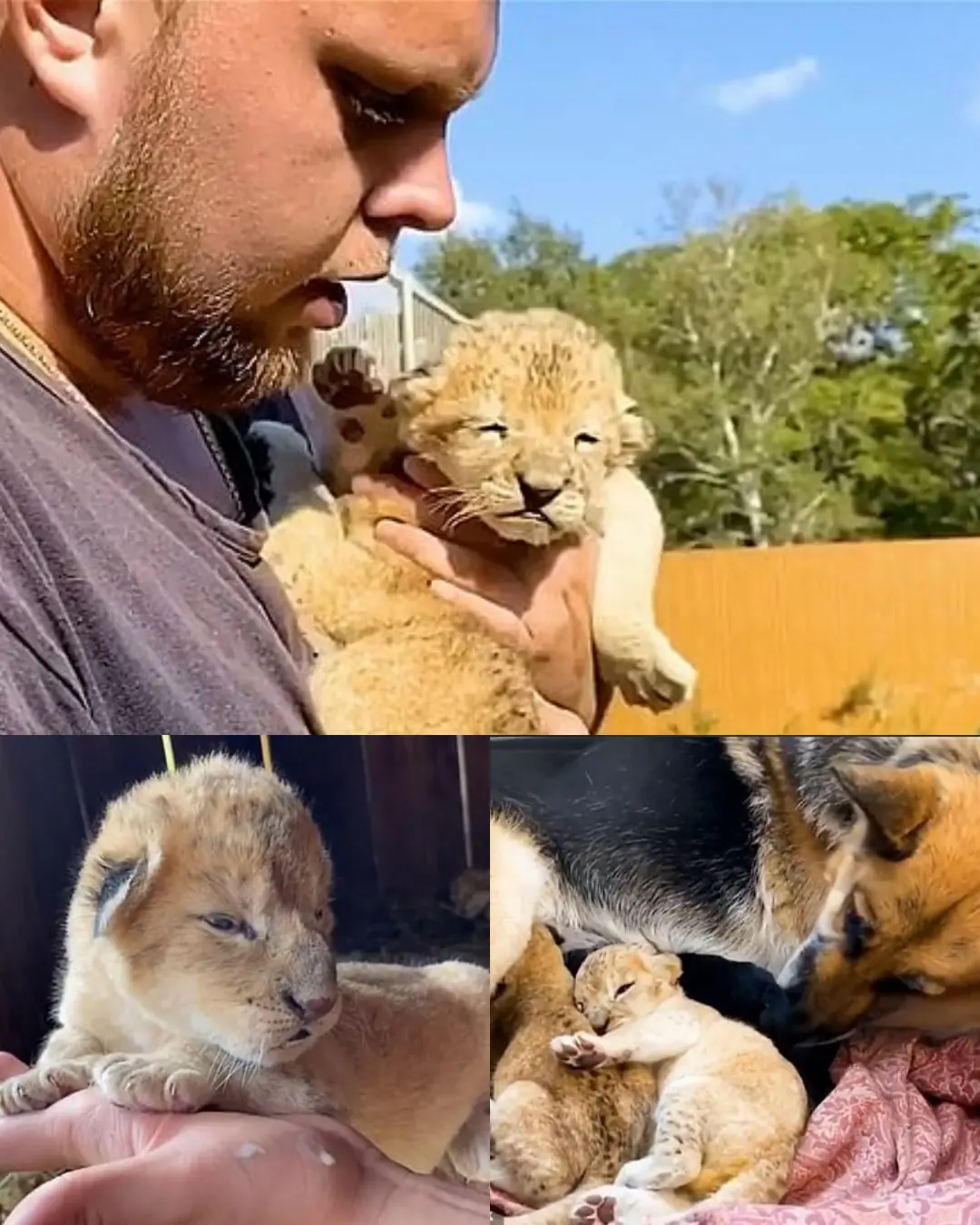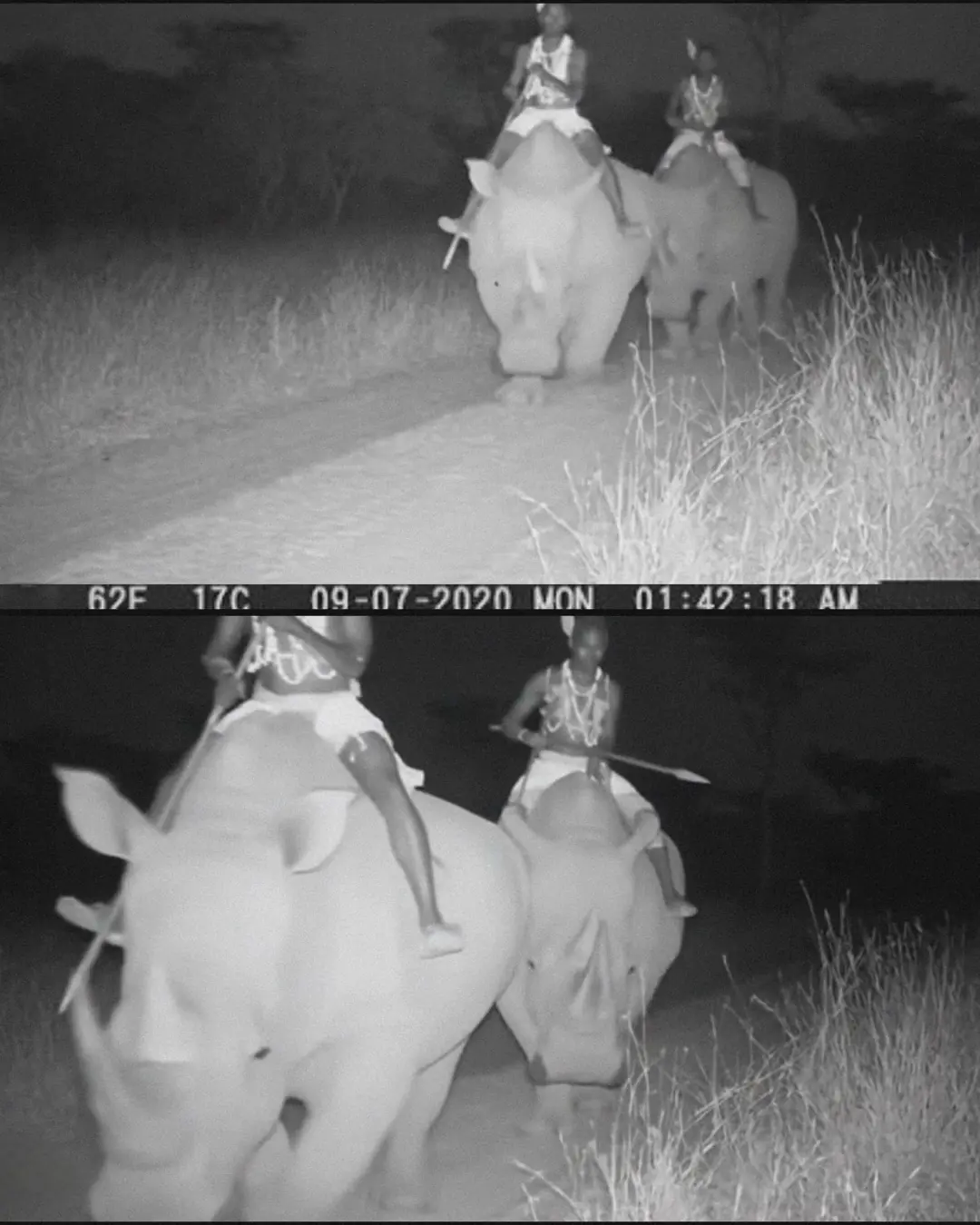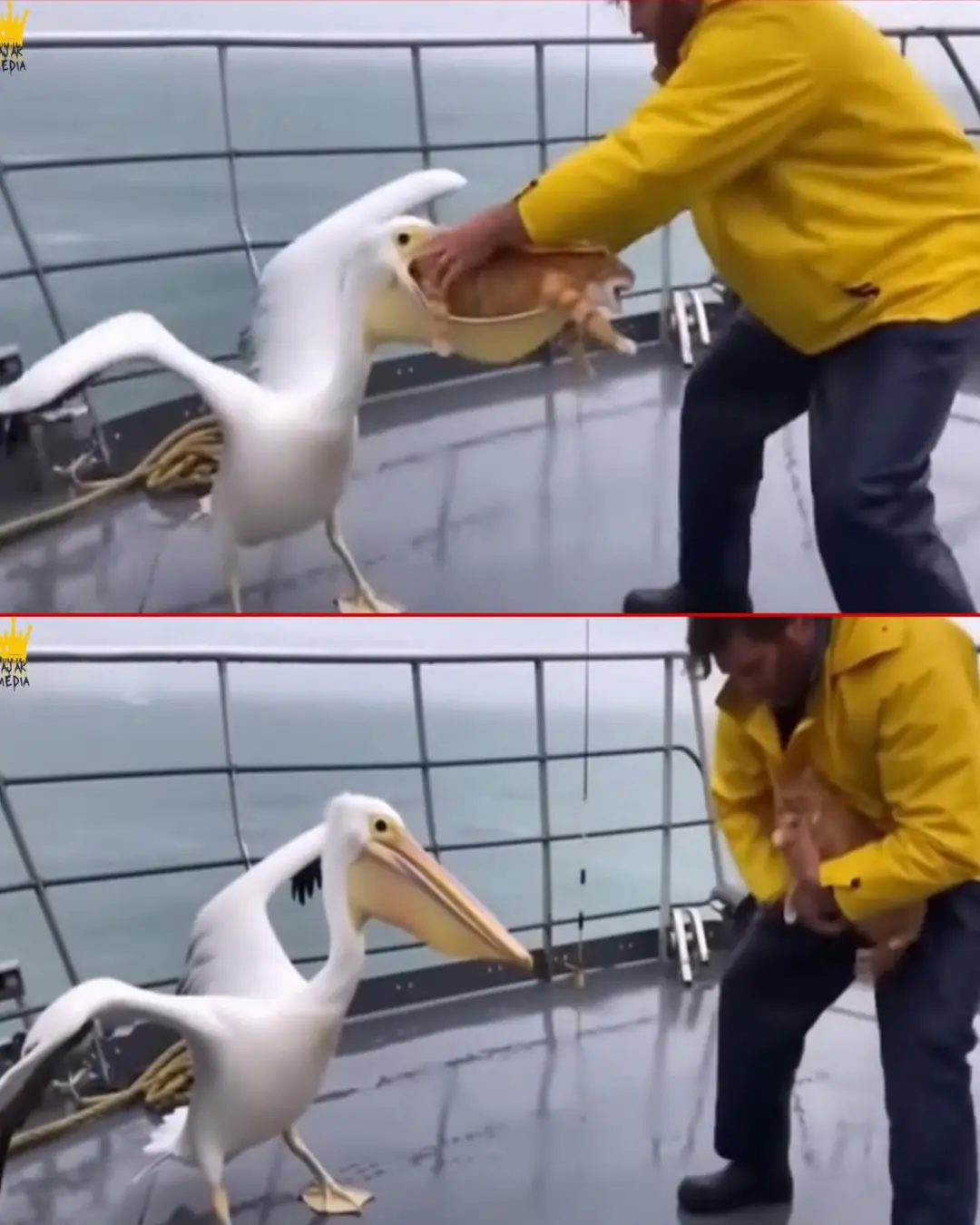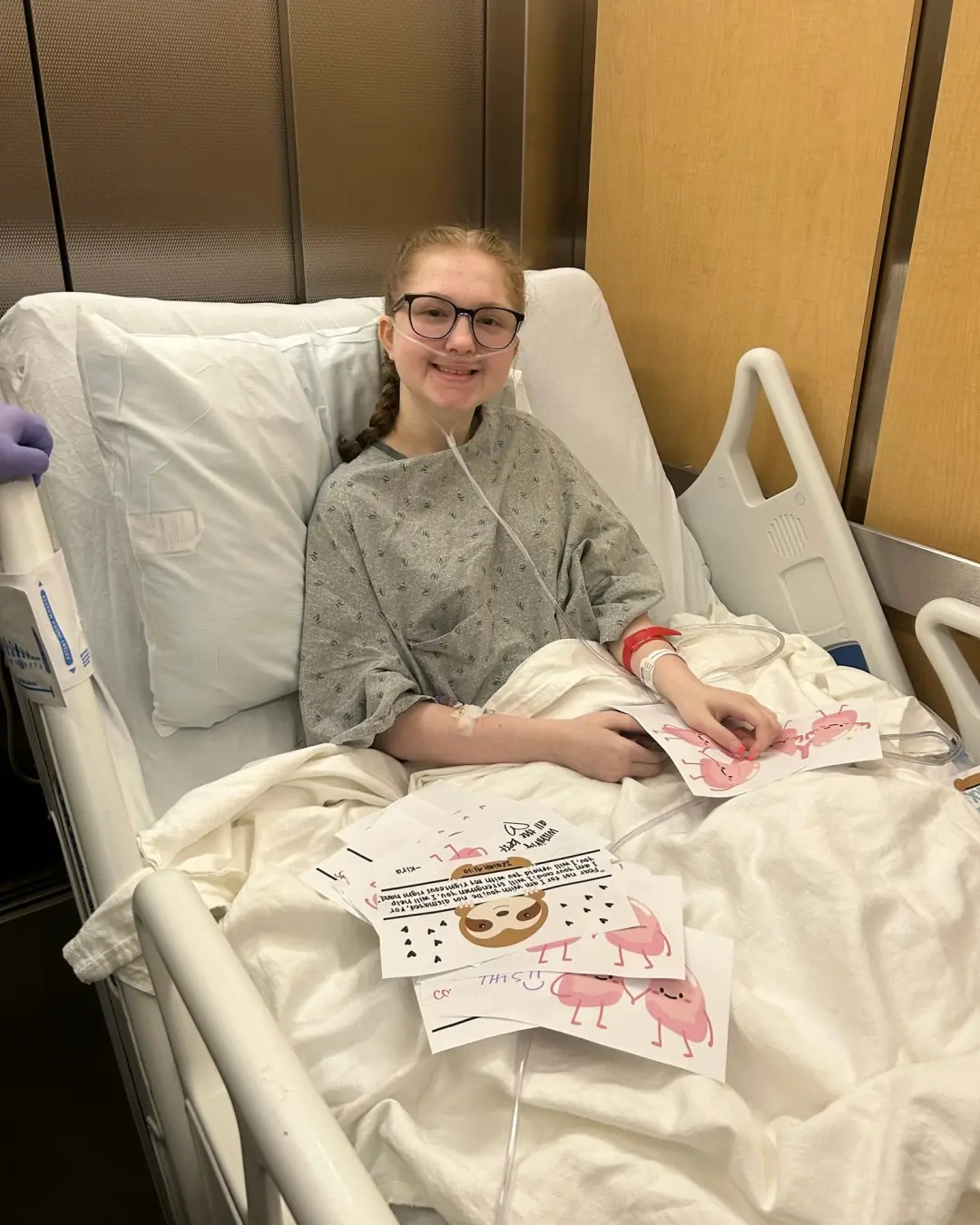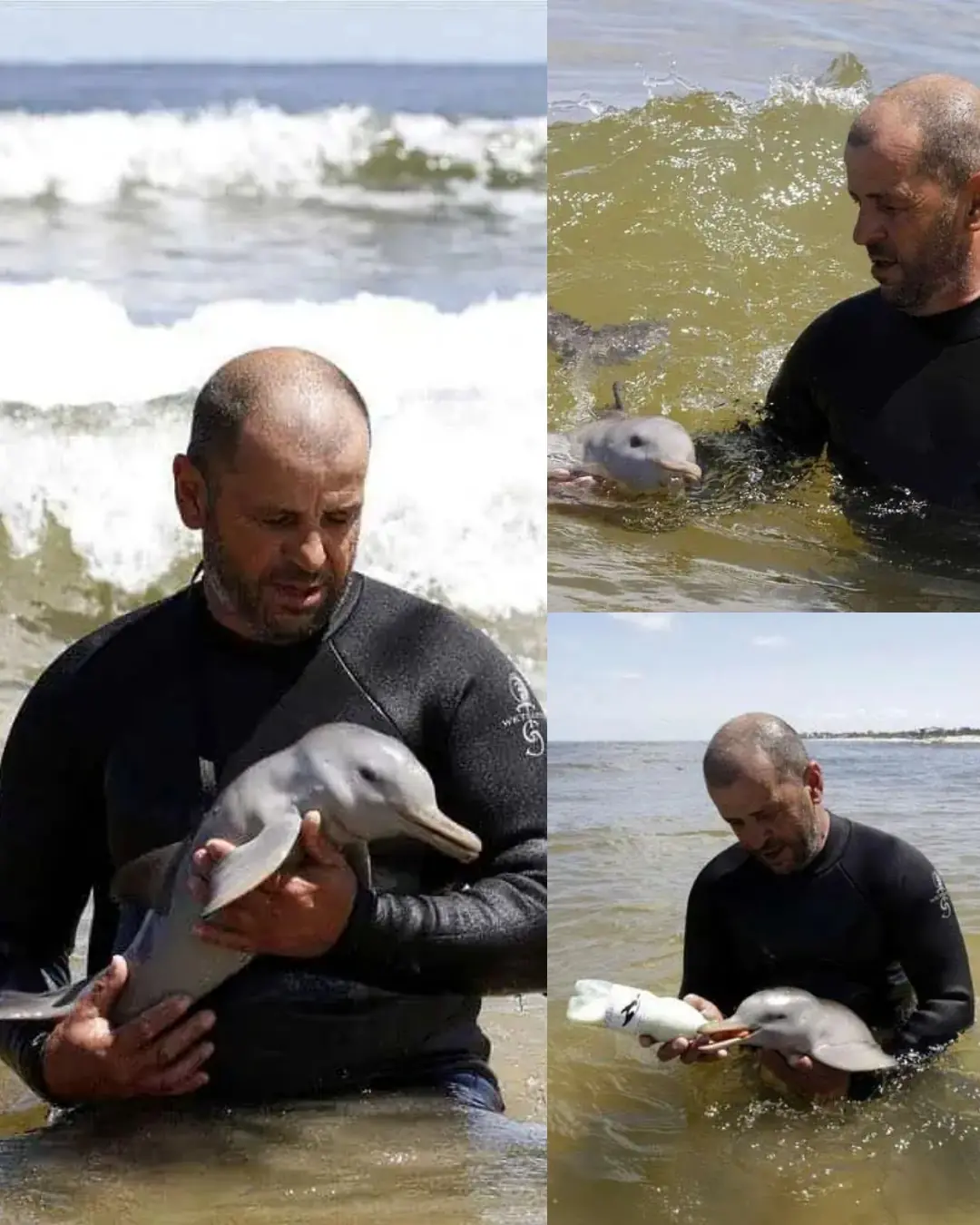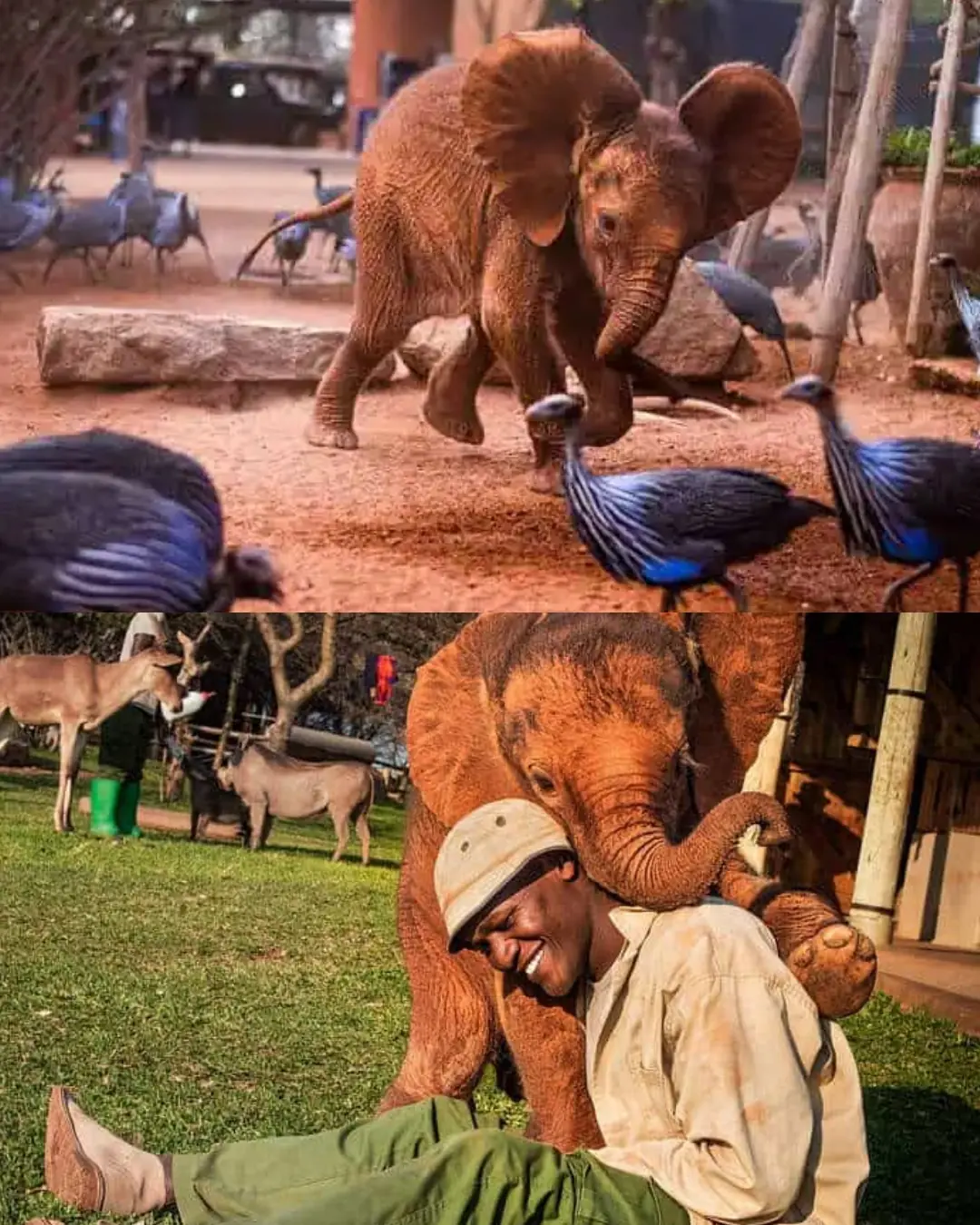🐆 A Leopard, a Pot, and a Village's Unexpected Visitor
In a quiet, remote village in India, the peaceful morning was suddenly shattered by startled cries and hurried footsteps echoing through the dusty lanes. News traveled quickly from house to house — a leopard had entered the village. Alarmed and curious, residents poured into the streets, expecting to face a fierce and dangerous predator. But the sight that met their eyes was anything but typical.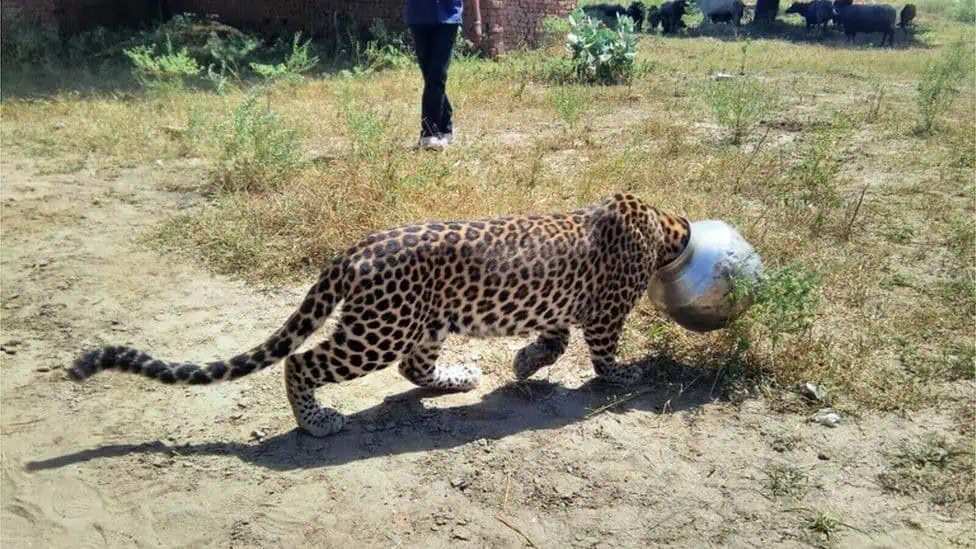
Instead of a snarling beast, they found a wild leopard with its head stuck inside a shiny metal pot.
The young male leopard, believed to be around three years old, had likely wandered down from the nearby forest in search of water. A severe drought had left most natural sources parched, forcing many wild animals to venture closer to human settlements. In its desperate search, the leopard had followed the scent of water to a pot commonly used by villagers to collect and store rainwater outside their homes.
Driven by thirst, the big cat had shoved its head deep into the narrow-mouthed pot. But once inside, the pot lodged tightly around its neck. No amount of twisting, shaking, or clawing could free it. Trapped and frightened, the animal stumbled blindly through the narrow village alleys, its muffled roars echoing between the homes — a chilling mix of frustration, fear, and helplessness.
From rooftops and windows, villagers watched the strange and surreal sight: a powerful predator disoriented and pacing, with a gleaming metal pot where its face should have been. A few brave souls attempted to get closer, hoping to help, but fear and the risk of provoking the animal kept most people at a safe distance.
Recognizing the danger — to both the leopard and themselves — someone wisely alerted the Forest Department. A rescue team was quickly mobilized.
🚨 The Delicate Rescue Operation
When forest officials arrived, led by District Forest Officer Kapil Sharma, they immediately understood the sensitivity of the situation. The leopard was already agitated and exhausted. Any sudden movement could cause it to panic further, putting lives in danger — including its own.
The team decided to tranquilize the animal from a safe distance. Using a tranquilizer dart, they waited patiently for the sedative to take effect. As the leopard finally collapsed into a heavy, drug-induced sleep, officers and veterinarians moved in with practiced precision.
Removing the pot was no easy task. The team used specialized tools to carefully loosen the metal without injuring the animal’s neck or head. After several tense minutes, a soft metallic clang rang out — the pot was finally free.
There was a collective sigh of relief. The team vet immediately checked the leopard’s vital signs — breathing, pulse, temperature. Remarkably, the animal had sustained no injuries. Just a bit of bruising and a whole lot of confusion.
🌳 A Safe Return to the Wild
Once the leopard was stabilized, it was gently placed into a secure transport cage and taken to a wildlife care center for further observation. Officials soon confirmed that the leopard was likely a resident of the Kumbhalgarh Wildlife Sanctuary, located about 20 kilometers from the village.
Later that same evening, after confirming the animal was fit and healthy, the team transported it to a safe release point deep within the sanctuary. As the gate to the cage was lifted, the leopard hesitated only briefly before leaping out and disappearing into the trees — a graceful blur of spotted fur vanishing into the wild.
It was free again. Safe again. Home again.
🌏 Reflections on a Changing World
What began as a moment of fear ended with a deeper lesson — one that speaks to the growing tension between expanding human life and the shrinking wild.
For the villagers, the day became a memory they would talk about for years — equal parts terrifying and comical. For the leopard, it was a harsh lesson in curiosity — and a reminder that not every shiny container holds what it promises.
Photos and videos of the leopard, its majestic frame humbled by an ordinary pot, quickly went viral online. People around the world chuckled at the bizarre image, but many also paused to reflect on the underlying truth: as forests shrink and water becomes scarce, human-wildlife encounters are no longer rare — they are the new reality.
Thankfully, this story ended on a hopeful note. The rescue team was applauded for their professionalism and compassion. The villagers breathed a collective sigh of relief. And somewhere deep in the forest, a young leopard awoke the next morning, hopefully sipping from a river or a stream — far away from metal pots and human homes.
